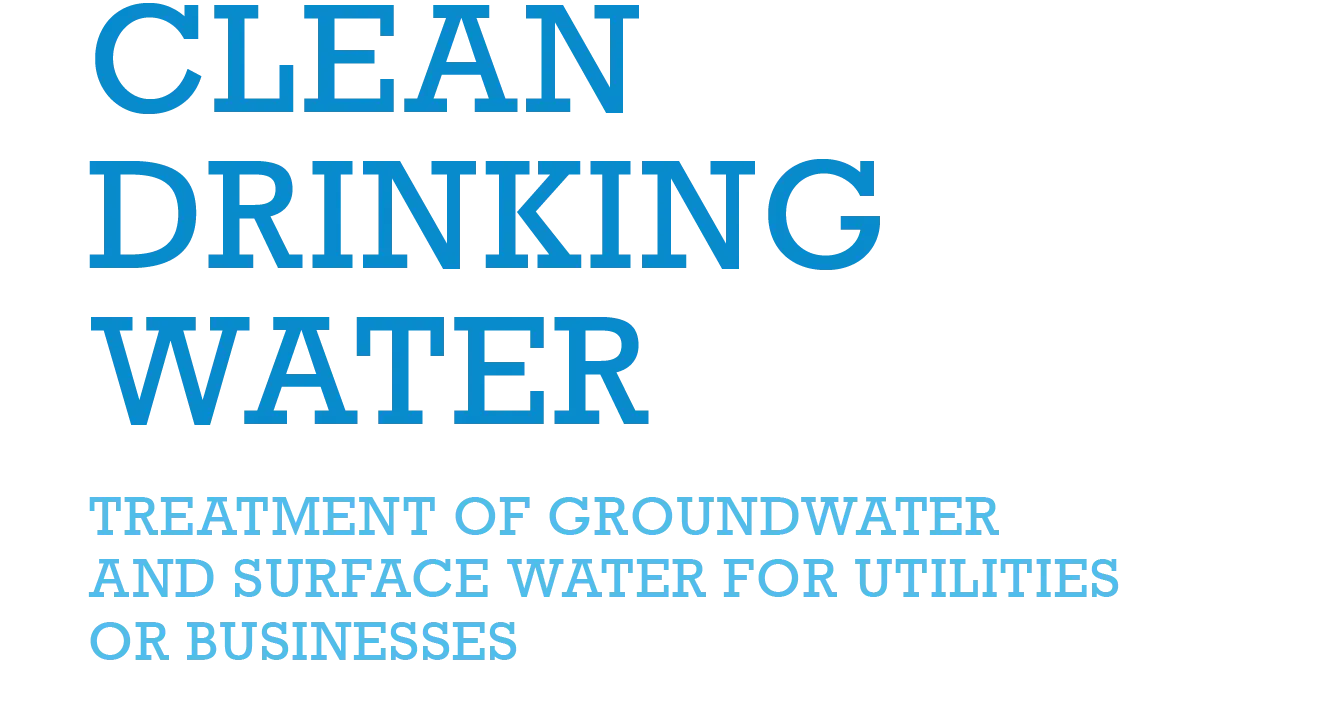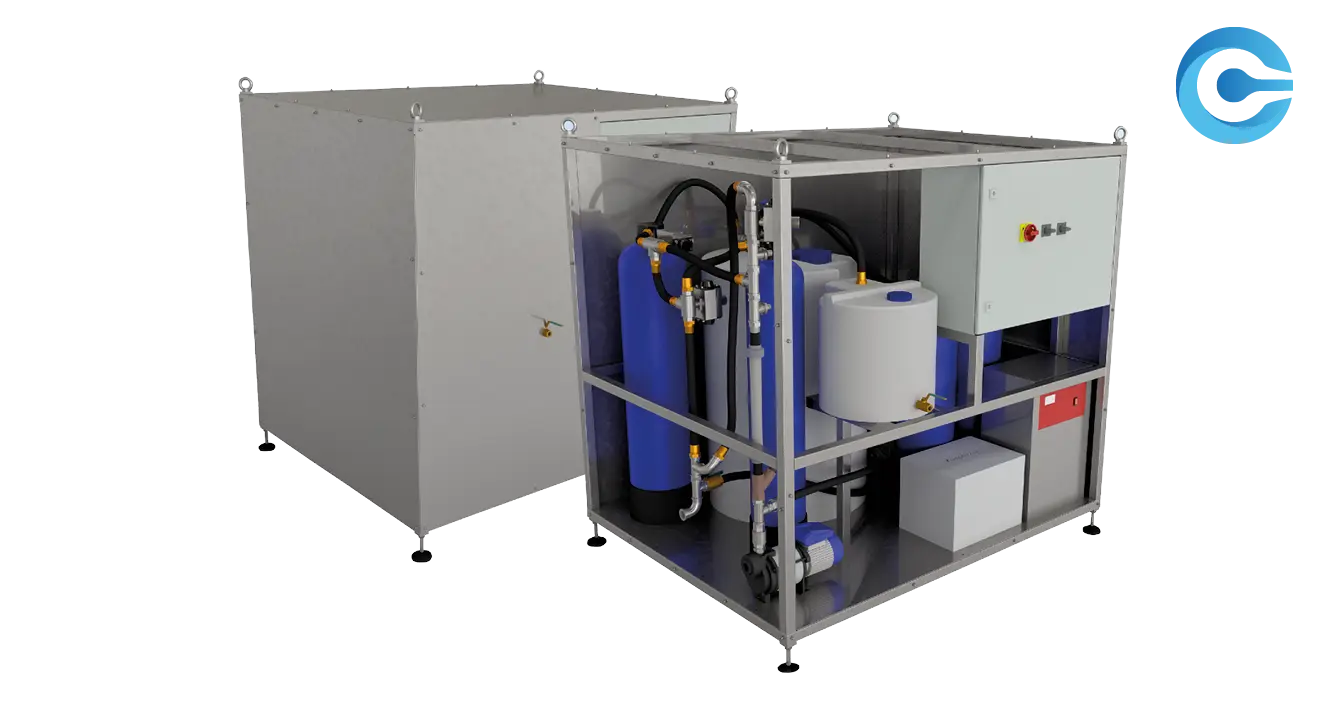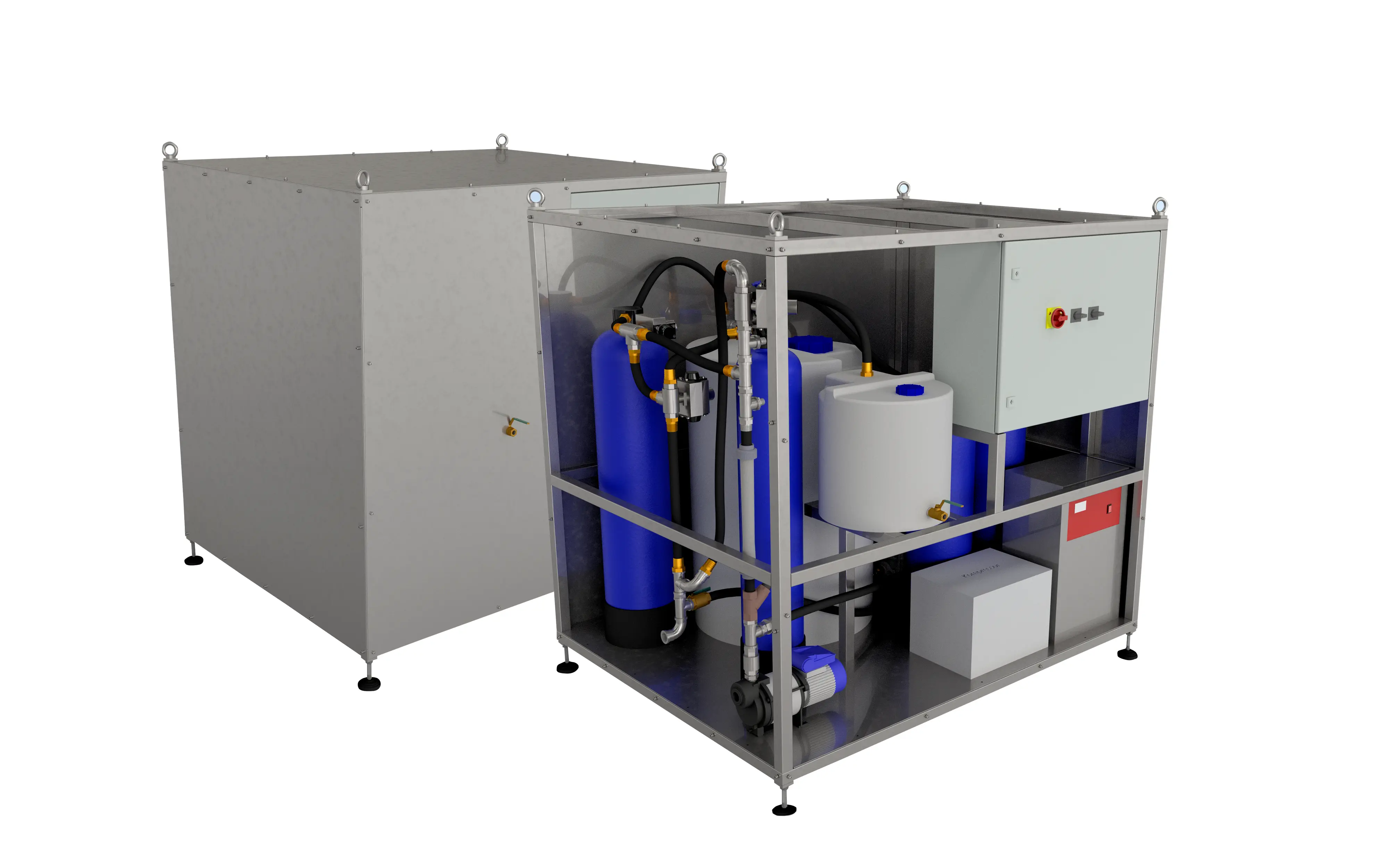

CLEARSTREAMʻS TECHNOLOGY FOR DRINKING WATER DISINFECTION
Clearstream‘s drinking water disinfection technology removes various organic and inorganic contaminants through advanced oxidation process (AOP) with controlled oxidation-reduction potential. It effectively destroys the membrane of bacteria or the capsids of viruses, decomposes scattered RNA/DNA and mineralizes or degrades a large number of toxic synthetic organics in filterable form. Disinfection is complemented by adsorption of heavy metals and proprietary catalytic conditioning
The Clearstream method can treat almost all types of standard water sources. It is also adaptable for heavy impurities.
WHAT IS THE DIFFERENCE TO CONVENTIONAL METHODS?
Clearstream is characterized by a particularly fast-acting process and offers mobile, compact and flexible solutions. Our systems are very robust and do not contain any sensitive parts, such as membranes. Maintenance requirements are therefore low compared to other solutions. Our high-efficient oxidation process ensures a higher neutralization rate of all bacterial and viral species compared to biological methods. Clearstream technology is also well suited for all contaminants and can be easily adapted to different requirement profiles. Power consumption is very low. The system can even be operated self-sufficiently with solar panels.
Our system at a glance

Benefits
- Cost effective to purchase and operate
- Simple operation
- Low maintenance
- Transportable and space-saving
- Flexible retooling (modular, scalable concept)
For which applications can Clearstream technology be considered?
DRINKING WATER IS A HUMAN RIGHT
Access to drinking water is more than access to a resource - it is a human right recognized by the United Nations. In reality, however, millions of people around the world have no access to clean drinking water every day. Overpopulation and droughts are increasingly exacerbating the problem. In many cases, complex treatment is required to produce drinkable water from surface sources and from deeper layers of the earth. This is because water from rivers and lakes as well as well water is seldom directly suitable as drinking water.
It often contains bacteria, viruses and other pathogens, spores or algae, and sometimes toxic heavy metals such as lead or cadmium. In addition to these natural contaminants, there are man-made ones: hormones, antibiotics, herbicides, pesticides or chemicals.
Clearstream‘s drinking water treatment system offers an efficient and innovative solution to meet the urgent challenge of clean drinking water.